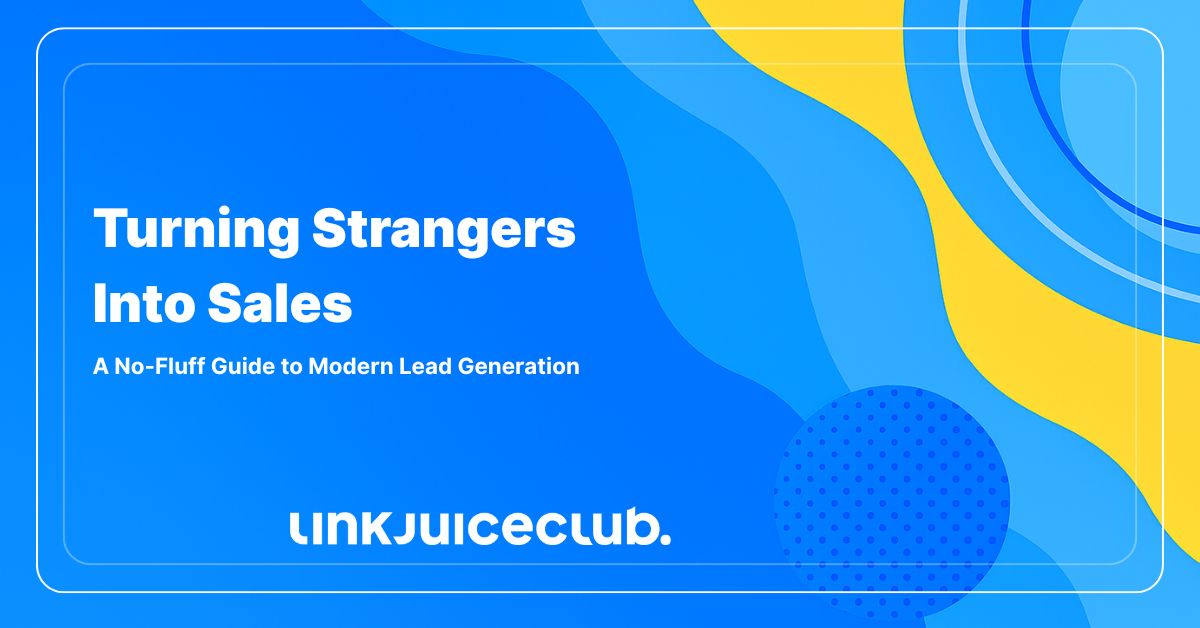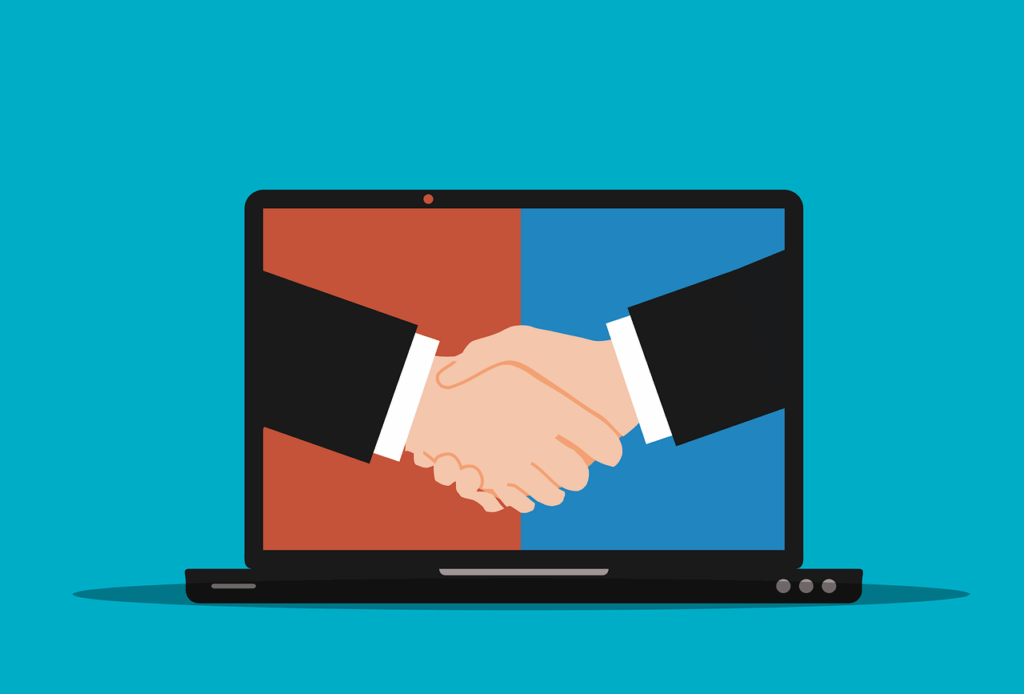
Turning Strangers Into Sales: A No-Fluff Guide to Modern Lead Generation
Imagine walking into a crowded room where everyone’s talking — but only a handful are ready to listen. That’s what digital marketing feels like today. The noise is deafening. Everyone’s posting, podcasting, and pitching. So how do you cut through the chaos and spark real interest?
You don’t chase leads. You build a signal strong enough for them to find you.
In this guide, we’re pulling back the curtain on lead generation — not the dusty, outdated kind, but the scalable, smart kind that actually converts. You’ll discover:
- What makes a lead worth your time
- Why not all leads are created equal (and how to tell the difference fast)
- Strategies that work today, not five years ago

This isn’t about random traffic or vanity metrics. It’s about creating a system that attracts the right people, warms them up, and nudges them to say “yes” — without begging or baiting.
Ready to turn attention into action? Let’s build something real.
So, What Is Lead Generation Really?
Think of lead generation like planting seeds in the right soil — it’s not just about throwing your message into the wind and hoping something sticks. It’s the strategic art of attracting people already leaning in your direction — those who’ve shown even the slightest spark of interest in what you offer.
You’re not just looking for any passerby. You’re trying to spot the ones browsing with intent, pausing at the right shelves, clicking with curiosity. The goal? To meet them early, build trust, and stick in their memory long before they’re ready to buy.
But lead generation isn’t just about closing sales — it’s also your backstage pass to:
- Spreading brand awareness far and wide
- Collecting valuable insights about your future customers
- Building long-term loyalty (not just one-off transactions)
Let’s make one thing clear: not every visitor is a lead. Some are just browsing, others are bots. A smart lead generation strategy targets the right people, on the right channels, at the right moment.
Here’s where the magic happens
| Channel | What It Does | Why It Works |
| Landing Pages | Capture interest with a targeted message and track behavior with pixels | Tailored content = higher conversion chances |
| Email Campaigns | Reach users who’ve already opted in | They’re warm, familiar, and open to your offers |
| Social Media | Create two-way conversations and build trust over time | Engagement can turn curiosity into commitment |
| Blog Content | Share insights and showcase expertise | Value-driven content keeps leads coming back |
| Live Events & Webinars | Meet potential leads face-to-face or virtually | Real-time interactions qualify leads faster |
| Discounts & Promotions | Incentivize sign-ups with value-first offers | Everyone loves a good deal — especially new visitors |
Different industries attract leads in different ways. What works for a fashion brand might flop for a B2B SaaS tool. That’s why testing is everything.
🎯 Your job? Find the sweet spot — the platform that delivers the most qualified leads and lean into it. Ditch the rest.
Not All Leads Wear the Same Shoes: The 7 Types You’ll Meet on the Way to a Sale
Sales? It’s the fuel that keeps your business engine humming. But it’s not just about pushing product — it’s about pulling the right people toward your offer.
Whether you’re selling heart monitors or hatchbacks, one rule holds true: focus your energy on the ones most likely to say yes. That’s where lead qualification comes in — your internal compass for who’s worth chasing.
Here’s your roadmap through the lead landscape, from ice-cold to red-hot:
🔥 Hot Leads
- These are the unicorns.
- Already engaged, interested, and decision-ready.
- Example: A purchasing manager who’s seen your demo, asked for pricing, and just needs to sign the dotted line.
✅ Your Move: Make the process frictionless. No delays. No distractions.
❄️ Cold Leads
- Barely aware you exist — if at all.
- No engagement, no intent (yet).
- They’re not browsing your blog, liking your posts, or opening emails.
✅ Your Move: Educate. Inspire. Spark curiosity with value-first content.
🌤️ Warm Leads
- They know your name, just not your full story.
- Maybe they’ve watched a video or skimmed your blog.
- They’re curious, not committed — yet.
✅ Your Move: Keep showing up. Consistency builds familiarity, and familiarity builds trust.
📩 Information Qualified Leads (IQLs)
- They’ve raised their hand — kind of.
- Signed up for your newsletter, downloaded a freebie, filled out a contact form.
- Still early-stage and craving more info.
✅ Your Move: Nurture with useful, non-pushy follow-ups. Think “value drip,” not sales pitch.
🎯 Marketing Qualified Leads (MQLs)
- These folks are problem-aware and actively looking.
- They’re downloading your guides, attending webinars, reading case studies.
- Still researching — but closer to choosing.
✅ Your Move: Give them proof. Testimonials, use cases, comparison charts.
🚦 Sales Ready Leads (SRLs)
- They’re leaning in — just need a little nudge.
- They have a need, budget, and timeline.
- Basically, they’re standing outside your shop window with their wallet in hand.
✅ Your Move: Validate their fit, answer lingering questions, and show them a fast path to purchase.
🛒 Sales Qualified Leads (SQLs)
- These are the real-deal buyers.
- Vetted, qualified, and actively engaging with your sales team.
- But heads up: They’re probably eyeing your competitors too.
✅ Your Move: Be bold. Show why you solve their problem better, faster, and with less friction.
Understanding these seven lead types isn’t just about labeling — it’s about knowing how to respond at each stage. Talk to a cold lead like a hot one, and you’ll burn the bridge before it’s built.
Building the Pipeline: A Step-by-Step Look at the Lead Generation Process
Think of lead generation like building a bridge — one careful step at a time, connecting where your customer is to where your solution can take them. Whether you’re going inbound (attracting leads through content) or outbound (reaching out directly), the path follows the same rhythm.

Let’s walk through it.
Step 1: Know Who You’re Talking To
Before you send a single email or write a word of copy — pause.
You need to know your audience like you know your closest friend. That means digging deeper than just “25-45, works in tech.”
Ask:
- What’s keeping them up at night?
- Where do they hang out online?
- What kind of content do they trust?
Build detailed customer personas:
- Age, job title, income
- Platforms they use (LinkedIn? TikTok? Old-school email?)
- Buying motivations and objections
And don’t ignore your competitors. What are they doing right? Where are they dropping the ball? Your goal is to out-help, not just out-sell.
Step 2: Create Content That Solves Real Problems
Once you’ve mapped out your audience’s pain points, it’s time to meet them halfway — with value-packed content that feels like a solution, not a sales pitch.
Think format-first:
- Blog posts for SEO and long-form storytelling
- Short videos for Instagram, TikTok, or YouTube
- Infographics and carousels for LinkedIn or X
- Webinars, PDFs, or whitepapers for deeper decision-stage content
No matter the channel, your content should do one of three things:
- Educate
- Build trust
- Move them closer to a decision
📌 Pro move: Align each piece of content with a specific stage in the buyer’s journey. Don’t serve steak to someone still wondering what they’re hungry for.
Step 3: Organize Leads Into a Smart System
You’ve got traffic. You’ve got engagement. But without structure, it’s chaos.
Set up a lead generation database — ideally through a solid CRM platform — to:
- Capture each lead’s behavior and info
- Tag and categorize based on source and intent
- Segment audiences for tailored follow-up campaigns
Look for CRMs that offer:
- Automation (so your team isn’t buried in manual work)
- Lead scoring and tagging
- Integration with your site, forms, and email tools
Efficiency here pays off later — especially when you’re dealing with hundreds (or thousands) of potential buyers.
Step 4: Score Your Leads and Prioritize Like a Pro
Here’s where you separate the curious from the committed.
Lead scoring lets you assign value to different user actions, so you know who’s just browsing — and who’s ready to buy.
💡 Example scoring model:
- +10: Follows your brand on social
- +5: Opens an email
- +20: Requests a demo
- +15: Downloads a guide
- +2: Visits your pricing page
Total it up, and you can rank leads like this:
| Lead Status | Behavior | Action |
| New | Just entered your system | No direct engagement yet |
| Working | In early conversation | May have replied to email or visited key pages |
| Nurturing | Not ready to buy | Engaging, but needs more time/value |
| Unqualified | No fit | No budget, interest, or authority |
| Qualified | Ready for sales | Strong signals and high intent |
When you know where each lead stands, you can respond accordingly — without wasting time or energy on dead ends.
This is the blueprint. Research smart, create with purpose, organize ruthlessly, and follow up like a human.
Smart Ways to Spark Interest: Lead Generation Strategies That Actually Work
Let’s get real — there are endless ways to generate leads. But chasing every tactic is a fast track to burnout. Instead, focus on strategies that are proven, repeatable, and built for long-term growth.
Below are the core lead generation strategies that work — along with examples of how to make them move the needle in your favor.
1. Content Marketing: Educate First, Convert Second
Content marketing isn’t just about writing blogs — it’s about solving problems before your audience even asks for help. When done right, it builds trust, pulls in traffic, and fills your pipeline with qualified leads.
🎯 Examples That Work:
- Publish SEO-optimized blogs targeting pain points your product solves
- Offer free downloadable guides or checklists behind opt-in forms
- Launch a YouTube series or podcast showcasing industry insights or how-tos
- Host live Q&A sessions on LinkedIn or Instagram
Content isn’t a one-off. Build a content ladder — from awareness (blogs, videos) → consideration (case studies, webinars) → decision (product comparisons, FAQs).
2. Email Marketing: Your Most Direct (and Profitable) Channel
Email might feel old-school, but when it comes to ROI, it’s still king. Personalized, targeted campaigns let you speak directly to your audience — at the right time, with the right message.
📌 Why It Works:
- High open rates across industries (Mailchimp reports avg. 35.63%)
- Easy to segment by behavior, location, interest, and more
- Full tracking: see who opens, clicks, and converts
💡 Use Cases:
- Welcome sequences for new subscribers
- Abandoned cart emails for ecommerce
- Re-engagement campaigns for cold leads
- Monthly newsletters with value-packed insights
And don’t just sell: educate, entertain, and invite replies. Relationships build revenue.
3. Social Media Marketing: Visibility Meets Engagement
Think of social media as the world’s biggest networking event — except it’s happening 24/7. It’s where you connect, show off your brand personality, and meet leads where they’re already hanging out.
🔥 Strategies That Convert:
- Share behind-the-scenes content, tips, and user-generated stories
- Use lead-gen ads with form-fill CTAs directly on platforms like Facebook and Instagram
- Run contests or giveaways gated by email sign-ups
- Promote free webinars or gated content through Stories, Reels, or posts
Don’t rely solely on organic reach. Mix in paid ads with laser-focused targeting (age, interests, job title, behavior) to reach new, qualified prospects.
Each of these strategies shines on its own, but together? That’s when you start creating a lead machine.
Make Lead Generation the Lifeline, Not the Leftover
Let’s not sugarcoat it — building a strong lead generation system takes work. It’s not instant. It’s not always easy. But it is the heartbeat of your business.
You can’t sell if no one’s listening. And no one’s buying if you’re talking to the wrong crowd.
That’s why prioritizing quality leads over vanity metrics is the difference between spinning your wheels and scaling with purpose.
Here’s what to keep in mind:
- Focus on better leads, not just more of them
- Keep nurturing since consistency wins trust
- Test, refine, and double down on what converts
Lead generation isn’t a one-time task. It’s a daily rhythm: research, create, connect, repeat. The brands that grow fast? They treat it like a system, not a side hustle.
You’ve now got the strategy. The next move’s yours.
Let the leads come to you — because you built the kind of brand they were already searching for.





